Chinese Name: 汉阳陵 Pronunciation: Hàn Yánglíng
Building Time: 153 BC
Land Area: 20 square kilometers
Opening Hours: 8:30-18:30 (No entry after 17:00)
Address: Zhengyang Town, Weicheng District, Xianyang City, Shaanxi Province, China
Best Visiting Time: The best time to visit the Yangling Mausoleum of the Han Dynasty is at the end of October and in early November when most of the leaves of ginkgo trees turn yellow, attracting numerous visitors to experience the beauty and charm of this glorious scenery.
| Tickets | Price |
| Full-Price Ticket | 70 RMB |
| Student Ticket | 35 RMB |
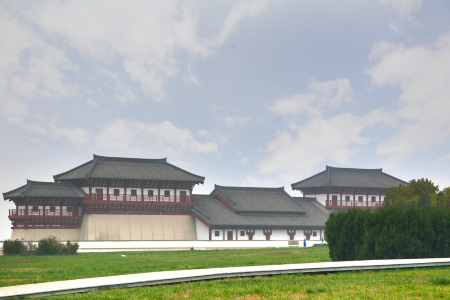
The Yangling Mausoleum of the Han Dynasty (202 BC-220 AD) is an imperial mausoleum where Emperor Liu Qi and Empress Wang of the Western Han Dynasty (202 BC-8 AD) were buried together. The Yangling Mausoleum of the Han Dynasty (hereinafter referred to as the Yangling Mausoleum) was first built in 153 BC and completed in 126 BC, which lasted for 28 years. It covers an area of 20 square kilometers in total.
The Yangling Mausoleum has been the best-preserved imperial tomb of the Han Dynasty discovered so far, so it has become an important material for people to study and understand the imperial mausoleum system, the history, and culture of the Han Dynasty. After more than 40 years of archaeological exploration and excavation, it has been discovered that the Yangling Mausoleum complex is mainly composed of the Emperor’s Mausoleum, the Empress’ Mausoleum, the southern burial pits, the northern burial pits, the ritual architectures, and a criminals’ graveyard.
The Emperor’s Mausoleum is square, surrounded by 81 radially distributed burial pits. There are many pottery warriors and animals in these burial pits and each of the warriors was carved with a facial expression. The rich grave goods are the true embodiment of the Chinese emperor who wanted to enjoy the glory, splendor, and wealth that he had in life. There are four gates on the four sides of the Emperor’s Mausoleum all of which are 110 meters away from the Emperor’s Mausoleum mound.
The Empress’ Mausoleum is located to the northeast of the Emperor’s Mausoleum, 450 meters away. In the Western Han Dynasty, the emperor and the empress were buried following the system of “different tombs in the same graveyard”. Empress Wang was the second empress of Emperor Liu Qi and the mother of Emperor Liu Che. She was died in the fourth year (125 BC) of Emperor Liu Che’s reign, 16 years later than Emperor Liu Qi’s death, and then buried in the Yangling Mausoleum.
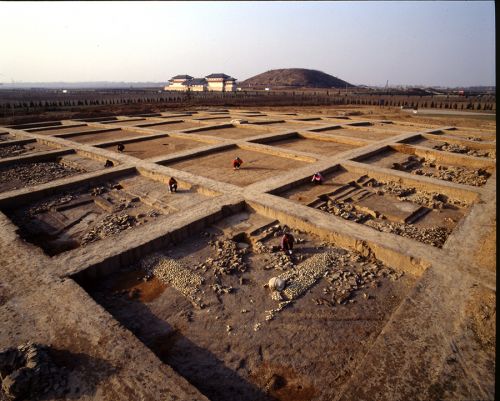
A boulder is located to the southeast of the Emperor's Mausoleum, called “Compass Stone”. In the construction of the Yangling Mausoleum, it was used to measuring the horizontal line and the height. It is the earliest measuring stone found so far and one of the most important ritual buildings in the Yangling Mausoleum.
The Han Yangling Museum was established in 1999 based on the Yangling Mausoleum complex and the research results of archaeological excavations. There is the Archaeological Exhibition Hall, the Exhibition Hall for the Outer Burial Pits of the Emperor’s Mausoleum (the Underground Museum), the Exhibition Hall for the South Gate Site, and the Ancestral Temple Site, with a display of more than 10,000 pieces of cultural relics. The profound cultures of the Han Dynasty, the colorful unearthed cultural relics, the unique underground museum, as well as the beautiful garden scenery have made the Yangling Mausoleum a large-scale cultural tourist attraction at home and abroad.
During the reign of Emperor Qianlong (1736-1795 AD) of the Qing Dynasty, Shaanxi governor Bi Yuan bestowed a stone stele for the Yangling Mausoleum of the Han Dynasty.
In May 1990, because of the construction of the Xianyang International Airport Highway, archaeologists explored Yangling Mausoleum and found many burial pits at 400 meters southeast of the Emperor’s Mausoleum. There are a total of 24 pits with numerous painted naked pottery figurines which was ranked as one of the most important archaeological discoveries worldwide in the 1990s.
In 1997 and 2000, archaeologists carried out two archaeological excavations of the South Gate in Yangling Mausoleum of the Han Dynasty and found that it was composed of two symmetrical building groups with one main gate tower and two annexes which was a special ritual building for ancient emperors.
In 1999 archaeologists excavated the surrounding area of the Compass Stone and found that the inside area has two layers. In the center, there is a square platform about 54 meters wide with 3 doors on each side and a total of 12 doors. Hollow bricks unearthed in the gateways have patterns of the Four Gods, namely Azure Dragon, White Tiger, Vermilion Bird, and Black Tortoise.
On June 25, 2001, the State Council announced that the Western Han Imperial Mausoleum, including Yangling Mausoleum, was the fifth batch of national key cultural relics protection units.
In July 2002, the State Administration of Cultural Heritage approved the “Yangling Mausoleum Protection and Utilization Plan”.
In May 2008, the Han Yangling Museum was awarded the title of the National First-Class Museum.
On October 9, 2010, the State Administration of Cultural Heritage announced that the 12 projects, including the Yangling Mausoleum of the Han Dynasty, were the first national archaeological parks.
In 2016, the tea unearthed in Yangling Mausoleum of the Han Dynasty was recognized by the Guinness World Records as the oldest tea found so far in the world. The tea unearthed in the tomb of Emperor Liu Qi is regarded as the best tea. The discovery has proved that the history of drinking tea can be traced back to at least 2,000 years ago.
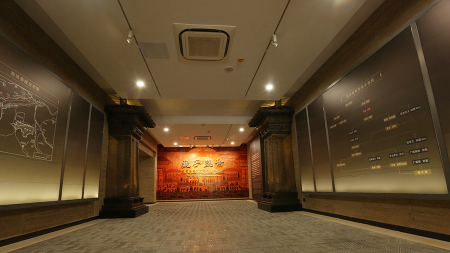
The Archaeological Exhibition Hall is a comprehensive exhibition hall with a unique architectural style and novel display techniques. The exhibition here is mainly composed of three parts, which has a clear theme line with nearly a thousand exquisite cultural relics on display. The first part introduces the ideas of governing the country and the historical contributions of Emperor Liu Qi, as well as the planning and construction of the Yangling Mausoleum. The second part focuses on the historical structure and cultural connotation of the Yangling Mausoleum by taking advantage of the results of the archaeological excavation during the past 30 years. Through a large number of exquisite unearthed relics, it fully shows the material culture, political system, and spiritual life during the reign of Emperor Liu Qi. The third part presents new methods of protection, management and display of the Yangling Mausoleum Site, conveying the new concept of cultural heritage protection. In addition, there are 9 multimedia interactive experience areas in the exhibition hall, which will enable the visitors to know about the stories behind the cultural relics.
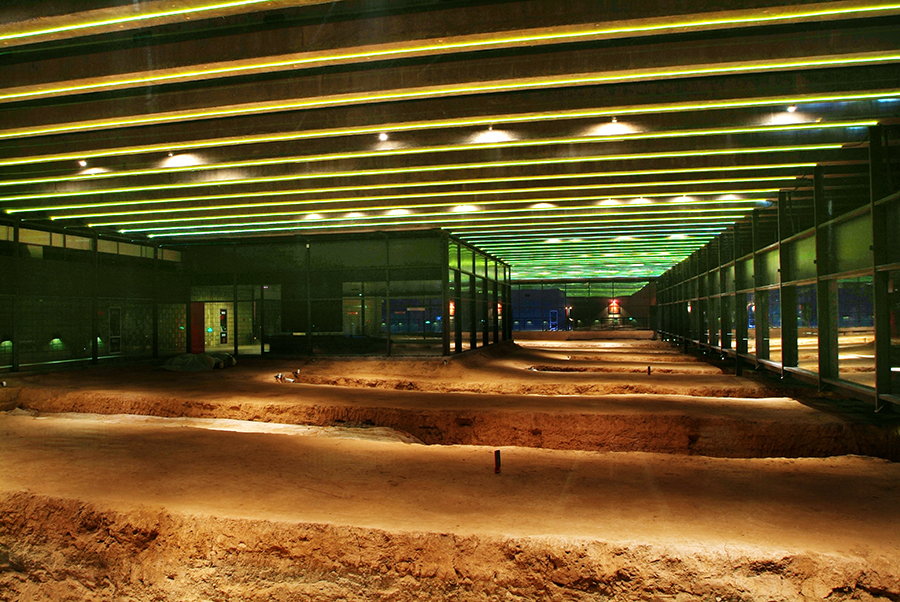
The Outer Burial Pits are an important part of the Emperor’s Mausoleum. The emperor’s tomb is surrounded by 81 Outer Burial Pits. The exhibition hall is an underground palace built on the 10 outer pits on the northeast of the Emperor’s Mausoleum. It is the first underground museum in the world built with the most advanced technology for cultural relic protection. In this hall, the cultural relics and visitors are separated by hollow coated electric heating glass walls and passageways in two environments with completely different temperatures and humidity. Under the premise of scientifically protecting the cultural relics to the maximum extent, visitors can enjoy the numerous cultural relics and witness the achievements of the archaeological excavations closely from different angles. In addition, the most advanced film and television imaging technology in the world is in use which demonstrates the historical events and colorful stories of the emperors in the Western Han Dynasty.
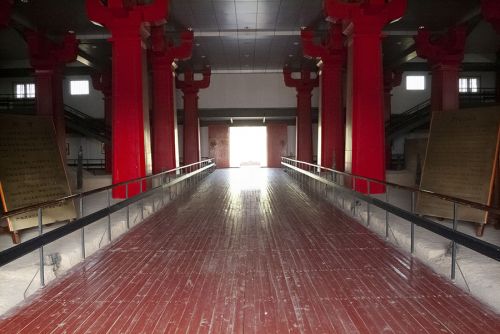
South Gate is one of the four gates of the Emperor’s Mausoleum, also known as the Vermilion Bird Gate, which is composed of two groups of three symmetrical Que towers (a kind of ceremonial gate tower in traditional Chinese architecture). It is the earliest, highest, and largest Que tower of imperial mausoleum at present. The appearance of the Exhibition Hall for the South Gate Site is an imitation of the Han-Dynasty-style Que tower building, which not only completely protects the existing ruins of the South Gate but also shows visitors the three magnificent and intact tower buildings that were only enjoyed by the emperors of the Han Dynasty. At the same time, the exhibition hall of nearly 2,000 square meters with rich photo materials introduces the history of the development and evolution of the Que tower in ancient Chinese architecture.
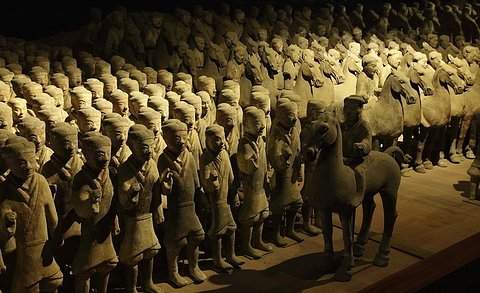
The discovery of burial pits filled with thousands of Mausoleum Guards at Yangling Mausoleum stunned the world in the 1990s. Compared with the famous Terracotta Warriors and Horses discovered at Qin Shi Huang’s Mausoleum, the pottery figurines found at Yangling Mausoleum are more charming and have richer cultural connotations. At present, there are just 1,000 terracotta figures unearthed in Qin Shi Huang’s Mausoleum, but there are more than 3,000 in Yangling Mausoleum. The Terracotta Warriors in Qin Shi Huang’s Mausoleum are all male soldiers, while the Yangling Mausoleum boasts both male and female terracotta warriors, terracotta officials and terracotta maidservants. They are only a third the size of an actual person, about 60 centimeters tall, naked and without arms. According to research, these pottery figurines were dressed in beautiful costumes, but their arms were made of wood inserted into pottery bodies, which aimed to make the wooden arms rotate flexibly. After thousands of years of erosion, the clothes and wooden arms were decayed. Some female terracotta warriors are mostly well-proportioned. The terracotta warriors of Yangling Mausoleum reflect the peaceful social atmosphere in the governance of Emperor Liu Qi.
Walking in the ginkgo forest in autumn is a good choice. Yangling Mausoleum of the Han Dynasty is definitely the best place to enjoy ginkgo around Xi’an. The Mausoleum is lined with ginkgo trees that have been planted for more than 10 years. Tens of thousands of ginkgo trees cover an area of about 67,000 square meters. The ginkgo forest in the late autumn is a wonderful golden picture. Some visitors say the leaves are like fans and others like butterflies and flowing skirts.
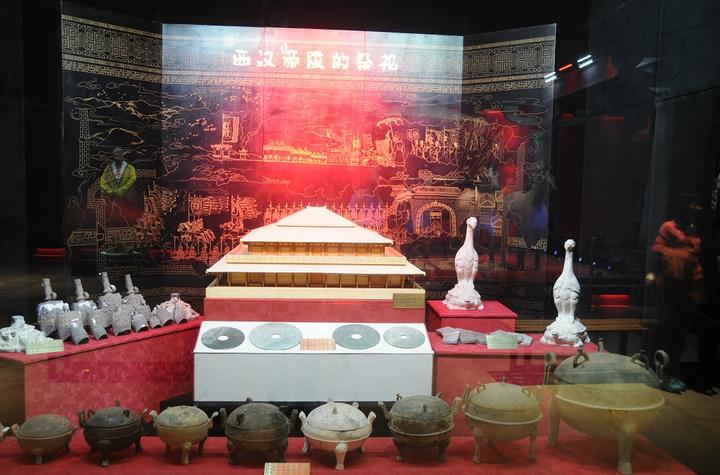
Mausoleums of Chinese emperors are an important part of ancient Chinese architecture. In ancient China, people believed that only a proper ground burial could bring peace to the deceased, and the deceased would live a similar life of the real world, so the above-ground and underground structures of the mausoleum, as well as the items, are virtually the same as daily use.
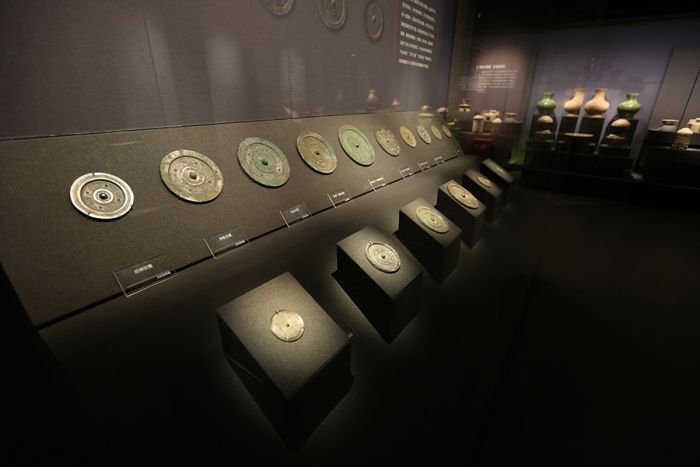
Emperor Liu Qi (188 BC-141 BC) was the fourth emperor of the Western Han Dynasty, reigning for 17 years. During his reign, he implemented the policies of cutting taxes and mitigating punishments, and royal marriage alliance with the Huns, which provided a much-needed breathing space for a country hit by civil wars and unrest. Emperor Liu Qi (also known as Emperor Jing) together with his father Emperor Liu Heng (also known as Emperor Wen) created a golden time throughout the Chinese feudal history, which is known as the “Rule of Wen and Jing”. He also laid a solid economic foundation for his son Emperor Liu Che (also known as Emperor Wu) to expand his territory.
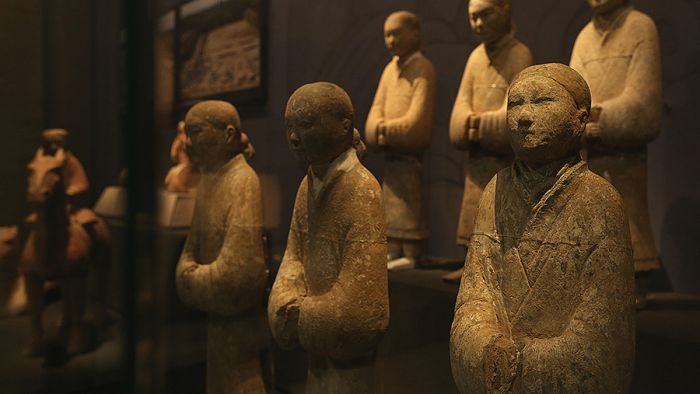
Terracotta maidservants in Yangling Mausoleum have warm and friendly smiles on their faces, which show the happiness of people in the Han Dynasty. The Yangling Mausoleum also boasts terracotta animals, utensils, gold and silver objects, and jade products, all of which reflect the country’s prosperity and the people’s happiness.
The scenic area is peaceful and secluded, and far from the city center. There are no shops in the scenic area. There is only a restaurant on the south side of the exhibition hall which is open only during meal hours. Be sure to prepare drinking water, food, or snacks before departure.
Visitors from Xi’an to Yangling Mausoleum can take Tourist Bus No.4 to the terminal Yangling Mausoleum Station.
Chinese: 请带我去汉阳陵景区。English: Please take me to the Yangling Mausoleum of the Han Dynasty.
If you go to the Yangling Mausoleum of Han Dynasty from Xi’an North Railway Station, it takes about 30 minutes (about 50 RMB).
If you go to Yangling Mausoleum of Han Dynasty from Xi’an Railway Station, it takes about 50 minutes (about 70 RMB).
If you go to Yangling Mausoleum of Han Dynasty from Xi’an Xianyang International Airport, it takes about 20 minutes (about 50 RMB).
